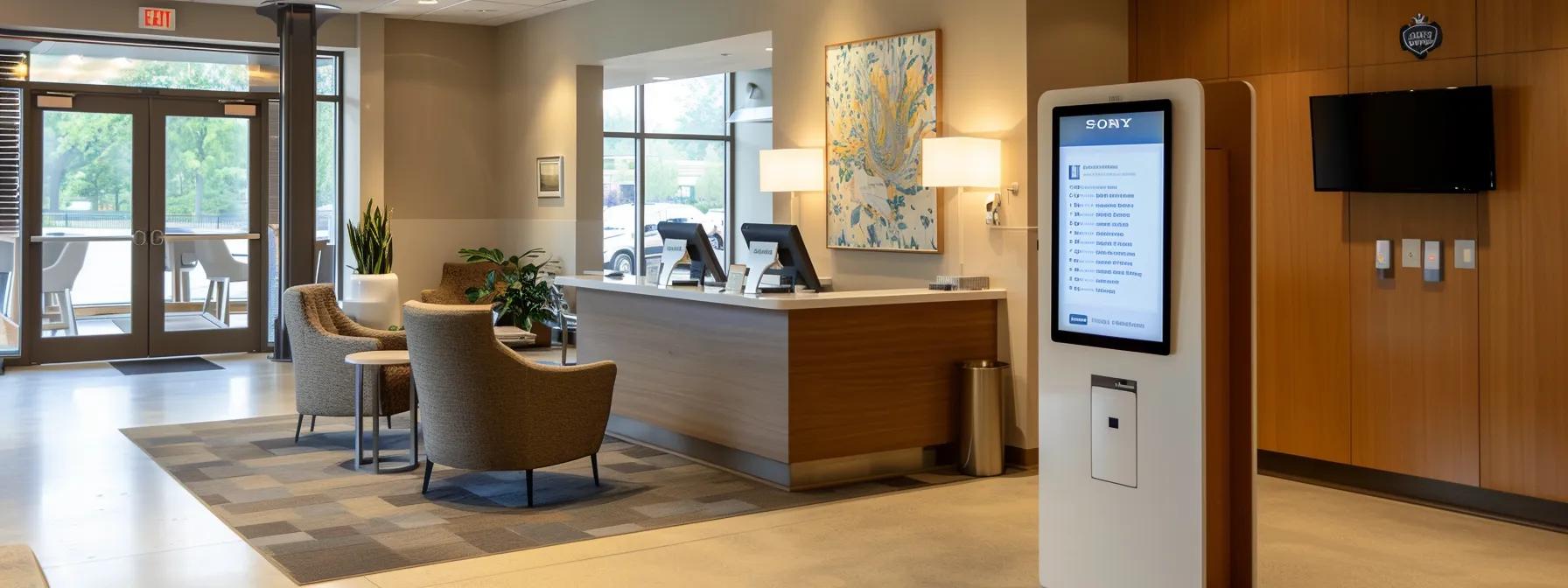
Stay up to date on the latest digital marketing topics.
News & Trends

How Custom Healthcare Websites Transform Patient Experiences
Custom Patient-Centric Healthcare Sites by Dapper Market Solutions LLC
Healthcare organizations rely on custom websites not only to present their brand professionally but also to engage patients, streamline communications, and comply with regulations. Today’s website for a healthcare provider is more than a digital brochure; it connects patients with services, eases appointment scheduling, provides accurate medical information, and meets strict HIPAA data security standards. This article covers the fundamentals of custom healthcare websites, explaining their importance, methods to improve patient engagement, design considerations for HIPAA compliance, and how these sites enhance overall healthcare outcomes. The content is structured under specific headings to clearly address key elements of custom website design and development.
What Are Custom Healthcare Websites and Why Are They Important?
Custom healthcare websites are tailor-made digital platforms built for healthcare providers, clinics, and organizations. Their value lies in presenting healthcare services clearly, securely, and accessibly while including features such as patient portals, appointment scheduling, and online information dissemination. Unlike generic templates, these websites incorporate specialized design and functionality to improve patient engagement, service delivery, and compliance with legal regulations like HIPAA.
How Do Custom Medical Websites Improve Patient Engagement?
Custom medical websites boost patient engagement through interactive features, intuitive navigation, and personalized content. For instance, integrated patient portals allow users to book appointments, access test results, and securely communicate with providers. Real-time chat options and visible contact forms further enhance the experience. Studies show that clear call-to-action buttons and user-friendly layouts can significantly increase appointment bookings. Additionally, a tailored visual design reinforces the organization’s brand and reassures patients about the quality and reliability of available services.
What Makes Healthcare Website Design Different From Other Industries?
Healthcare website design is unique due to its focus on patient privacy, stringent regulatory compliance, and the need to present complex medical information clearly. Unlike other industries, these websites must include advanced data security measures, such as encryption and secure login systems, while integrating patient education resources and appointment tools. This combination of regulatory, functional, and aesthetic requirements demands a rigorous, iterative design process to ensure high standards are met.
Which Healthcare Organizations Benefit Most From Custom Websites?
All healthcare organizations can benefit from a custom website, yet hospitals, multi-specialty clinics, and private practices with high patient volume and sensitive data requirements gain the most. Facilities offering telehealth or managing electronic health records need platforms that integrate seamlessly with their systems. Well-designed websites can reduce administrative burdens by automating appointment scheduling and consolidating patient information, ultimately improving operational efficiency and patient outcomes.
How to Ensure HIPAA Compliance in Healthcare Website Development?

HIPAA compliance is essential in healthcare website development to protect patient data and avoid legal penalties. Websites must adhere to stringent rules on how personal health information (PHI) is collected, stored, and transmitted. Developers are required to use strong encryption, secure hosting, and regular security audits. Non-compliance can lead to heavy financial losses, legal actions, and reputational damage.
What Are the Key HIPAA Requirements for Medical Websites?
Key HIPAA requirements include strong encryption for data transmission, robust authentication protocols, access controls, and secure server environments. An SSL certificate, for example, encrypts data between the user and the site. User authentication often involves two-factor measures to prevent unauthorized access. Additionally, any third-party tools must comply with HIPAA guidelines, and regular audits are essential to quickly address vulnerabilities.
How Does HIPAA Compliance Affect Website Design and Functionality?
HIPAA compliance influences both website design and functionality. Designers must integrate secure patient portals and plan data input methods carefully. Functional features like appointment scheduling, patient messaging, and record access require advanced security protocols. Although these requirements can limit some design flexibility, they are vital for protecting sensitive information and enhancing the provider’s credibility.
What Are Best Practices for Protecting Patient Data Online?
Protecting patient data online requires a multi-layered approach. Best practices include robust encryption (HTTPS, SSL), strict access controls with role-based permissions, and regular security audits. Healthcare websites should also employ secure backups, firewalls, and intrusion detection systems. In addition, staff should be educated on data handling and clear breach response protocols must be established to maintain compliance and patient trust.
What Features Should Custom Healthcare Websites Include?
Custom healthcare websites need to include features that address the unique demands of the healthcare industry while ensuring usability and compliance. Essential elements include patient portals, integration with electronic health records (EHR), appointment scheduling capabilities, responsive design, and strong security measures. These features are designed not just to improve aesthetics but also to streamline workflow, enhance communication, and ensure efficient care coordination.
How Do Patient Portals Enhance Healthcare Website Functionality?
Patient portals provide a secure, user-friendly interface for accessing health records, communicating with providers, and managing appointments. They bring several functions together on one platform, reducing administrative work while improving patient engagement. Access to online portals can enhance patient satisfaction and encourages better self-management of chronic conditions.
Why Is Integration With EHR and Practice Management Systems Crucial?
Integrating with EHR and practice management systems centralizes patient data, streamlines appointment scheduling, billing, and treatment history, and minimizes errors from manual data transfer. This integration ensures that healthcare professionals have the latest information and supports compliance with industry standards, thereby improving the efficiency of clinical workflows.
How Does Mobile Responsiveness Improve Patient Experience?
A mobile-responsive design ensures that patients can access important information and services on any device. Mobile optimization enhances user experience through clear navigation and swift load times, which is essential given the increasing use of smartphones and tablets for health-related tasks. A well-functioning mobile site can lead to higher engagement and more frequent appointment bookings.
What Role Does SEO Play in Healthcare Website Success?
SEO is critical for making sure that potential patients can find a healthcare website quickly and easily. By employing effective SEO strategies, such as local SEO, keyword optimization, and quality content, healthcare providers can improve online visibility. These practices not only drive organic traffic but also help build the site’s credibility with both users and search engines.
How to Design a Patient-Centric Healthcare Website?

Designing a patient-centric website starts with understanding what patients need. The design must prioritize simplicity, clear navigation, and engaging content to answer common patient questions. Incorporating features such as patient portals, timely updates, and educational resources helps empower patients to manage their health. When the design places the patient at its core, the resulting website is both functional and emotionally engaging, fostering trust and improving outcomes.
What Are the Best Practices for Healthcare Website User Experience?
For a superior user experience, websites should have clear navigation, readable fonts, and a logical content structure. A clean, uncluttered interface with prominent call-to-action buttons, search bars, and accessible contact information ensures ease of use. Incorporating responsive design and continuously gathering user feedback can help refine the interface, leading to higher patient engagement and conversion rates.
How Can Data-Driven Design Improve Website Performance?
Using analytics and user feedback, designers can optimize website performance. By monitoring metrics like page load times, bounce rates, and conversion rates, issues can be identified and addressed quickly. Tools such as heatmaps and session recordings help determine which areas need improvement, allowing adjustments to enhance user engagement while ensuring the site meets evolving standards.
Why Is Branding Important in Custom Medical Website Design?
Branding creates a lasting impression and builds trust with patients. Consistent design elements, color schemes, and messaging reinforce the healthcare provider’s values and professionalism. A strong brand identity differentiates a provider in a competitive market and encourages patients to seek care and share positive experiences with others.
How to Choose the Right CMS for Custom Healthcare Websites?
A Content Management System (CMS) is the backbone of a custom healthcare website, enabling easy content updates, scalability, and overall management. Key factors when selecting a CMS include ease of use, integration capabilities, security features, and support for accessibility standards. Popular platforms like WordPress and Drupal offer extensive customization and plugins that facilitate HIPAA compliance, making them suitable options for healthcare providers.
What Are the Benefits of Using WordPress or Drupal for Medical Websites?
Both WordPress and Drupal offer robust content management, strong community support, and effective security features. WordPress is appreciated for its user-friendly interface and extensive plugin ecosystem that supports appointment scheduling and patient portal functions. Drupal is favored for its high customization levels and scalability, making it ideal for larger organizations with complex data requirements.
How Does CMS Support Easy Content Updates and Compliance?
A good CMS allows non-technical staff to update text, images, and multimedia easily, ensuring that content remains current. Built-in security features, regular updates, user role management, and audit trails help maintain compliance with industry standards like HIPAA while keeping patient data secure.
Healthcare Website Maintenance & Support – Dapper Market Solutions LLC

Ongoing maintenance is critical to ensure a healthcare website remains secure, compliant, and effective. Regular updates, security patches, and performance monitoring minimize downtime and prevent vulnerabilities. Scheduled backups, content revisions, and usability testing further contribute to a stable digital environment that adapts to patients’ and technology’s changing needs.
Why Is Continuous Security Monitoring Essential for Medical Websites?
Continuous security monitoring is vital because medical websites handle sensitive patient data. Regular checks of the website’s backend and user interactions help detect potential threats early. Tools like intrusion detection systems and automated security audits ensure issues are addressed promptly, protecting patient data and maintaining trust.
How Does Regular Website Maintenance Improve Performance and Compliance?
Regular maintenance keeps a website updated with the latest security patches and performance optimizations, minimizing technical issues and unplanned downtimes. This ongoing effort ensures that all integrated systems, such as patient portals and EHR interfaces, continue to comply with HIPAA and other regulatory standards while providing a reliable user experience.
How to Optimize Custom Healthcare Websites for Search Engines?
SEO optimization is an ongoing process that enhances website visibility by combining technical improvements, quality content, and strategic keyword usage. Effective SEO increases organic traffic and builds credibility with both search engines and users, ensuring that potential patients can easily find necessary medical information and services online.
What Are Effective SEO Strategies for Healthcare Website Design?
Effective strategies include extensive keyword research, natural integration of keywords in high-quality content, and optimization of meta tags, headings, and image alt texts. Implementing structured data like schema markup and regularly auditing the site help address technical issues such as broken links and slow load times, boosting overall SEO performance.
How Can Local SEO Help Healthcare Providers Attract Patients?
Local SEO targets specific geographic regions, making it easier for nearby patients to find healthcare services. Techniques include using location-based keywords, optimizing Google My Business profiles, and encouraging local reviews. This localized approach enhances trust and ensures essential details such as office hours and contact information are prominently displayed.
What Content Types Boost Healthcare Website Rankings?
A mix of content types such as informative blog posts, patient testimonials, video case studies, and detailed FAQs can improve search engine rankings. Downloadable resources like white papers, infographics, and e-guides also contribute by attracting authoritative backlinks and increasing user engagement through diverse, valuable content.
Table: Key Features and Benefits of Custom Healthcare Websites
Before the FAQ section, the table below summarizes core features and their benefits:
This table highlights how these features improve patient care, operational efficiency, and digital marketing effectiveness.
List: Best Practices for Maintaining a Custom Healthcare Website
- Frequent Security Audits – Regular vulnerability assessments to protect sensitive data.
- Content Updates – Keep services, staff details, and health resources current.
- Regular Software Updates – Update the CMS, plugins, and server software to reduce risks.
- Performance Monitoring – Use analytics to track user behavior and website performance.
- Patient Feedback Integration – Gather feedback to continually refine functionality and design.
Regular adherence to these practices ensures that a healthcare website remains secure, efficient, and compliant.
Frequently Asked Questions
Q: What distinguishes a custom healthcare website from a generic template? A: A custom healthcare website is designed specifically to meet medical providers’ needs, featuring patient portals, secure data integration, and tailored design elements to ensure HIPAA compliance, unlike generic templates that may omit such critical functionalities.
Q: How does integrating patient portals on a website improve patient care? A: Patient portals provide secure access to medical records, appointment scheduling, and direct communication, which enhances patient engagement and streamlines care coordination while reducing administrative work.
Q: Why is mobile responsiveness essential for healthcare websites? A: Mobile responsiveness ensures that patients can access services and information on any device, improving user experience, boosting engagement, and supporting essential functions like appointment bookings.
Q: What role does SEO play in the success of a healthcare website? A: SEO improves visibility in search engines, helping potential patients find reliable information. Effective strategies, including keyword and local SEO, drive organic traffic and enhance user engagement.
Q: How do HIPAA requirements influence the design of healthcare websites? A: HIPAA mandates strict data security measures such as encryption and secure authentication. These requirements affect site design by necessitating secure portals and careful integration of third-party tools, ensuring all patient data is protected.
Q: Can a healthcare provider update their website content easily without technical expertise? A: Yes, user-friendly CMS platforms like WordPress or Drupal allow providers to update content easily, manage media, and integrate plugins while maintaining regulatory compliance.
Q: What are the long-term benefits of maintaining an optimized, custom healthcare website? A: Benefits include improved engagement, better data security, increased online visibility, and enhanced operational efficiency. An optimized website builds patient trust and streamlines administrative processes, leading to better overall healthcare outcomes.
Final Thoughts
Custom healthcare websites modernize patient care and improve operational efficiency by incorporating specialized features tailored to regulatory and user-specific needs. They integrate functionalities such as patient portals, EHR systems, and secure communication channels while complying with strict data protection standards. With strategic design, effective SEO practices, and regular maintenance, healthcare providers can establish a strong digital presence, enhance patient engagement, and achieve improved care outcomes. As the healthcare landscape evolves, investing in a custom website is essential to create a secure, responsive, and patient-centric digital environment.
Explore More From DMS
The Team, The Team, The Team!

